Day 7: Trani
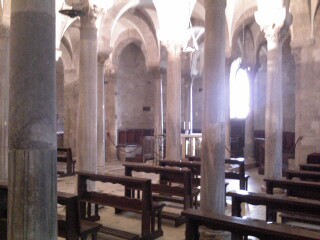
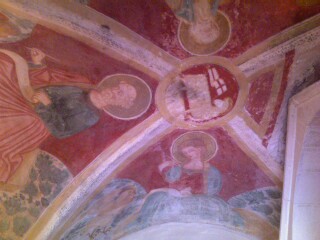
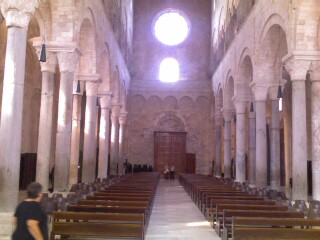
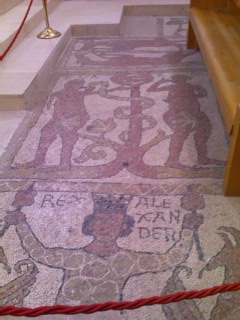
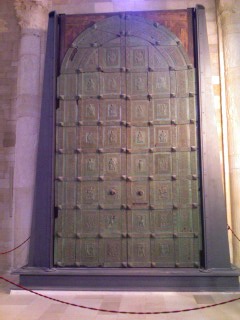
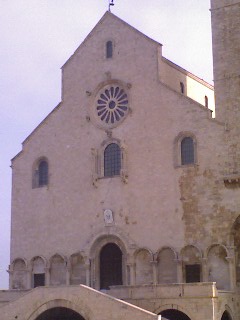
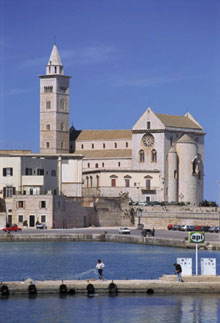
Here is the link to a Google map showing Trani’s harbor and “centro storico”.
Trani also has a historic Jewish connection. It was a center of Jewish learning and up to the 12 century, there were about 200 families and four synagogues. When we visited here seven years ago, two of the churches in the “centro” were identified as having formerly been synagogues. I had read that two of the churches had been deconsecrated and that there were plans to restore them as historic synagogues and Jewish centers…even though no Jews are left in Trani. I had also read about a restaurant that served Mediterranean-style food with an emphasis on Jewish recipes. I wanted to return to Trani to see how these plans were coming along as well as because we had liked Trani so much.
In any case, the plans have not progressed too far although there is construction going on at the Scolanova and there is a Jewish star on the top of building. And the restaurant is no longer serving “Jewish” food on a regular basis…only when there is a Jewish event in town.
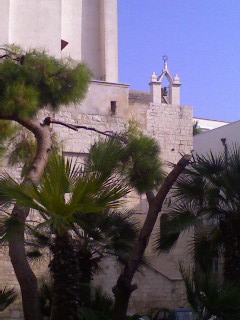
Even so, Trani is a very appealing destination…:)
We spend some time in the public park, walking around and sitting looking at the water…on this Thursday morning, it is quite busy with mothers and children, old men sitting on benches, joggers, tourists and students. It is still as beautiful and pleasant as we had remembered….a very good respite from the “hard work” of sightseeing.
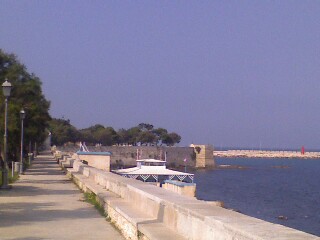
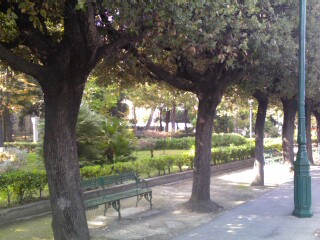
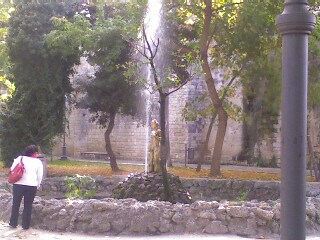
We have a quick lunch at one of the bars on the harbor and then get in the car to explore the countryside above Trani. The expedition is fraught with touristic mishaps however. Our first stop is at Cannae, the sight of a battle where Hannibal crushed the Roman legions during one of the Punic Wars. However, when we arrive the site and the museum are both closed….another “in restauro” experience. We make a short detour to the town of Canosa di Puglia but the historic sites there don’t seem particularly striking to us and the town is not very attractive either.
The most interesting thing about our expedition is seeing the fields stretching out as far as the eye can see filled with either olive groves or vineyards or both. Once in a while, there is a small peach orchard….but it is not hard to believe that Puglia produces most of Italy’s olive oil and alot of wine. The cultivation goes on for miles as we climb onto the plateau called La Murgia. Once on the plateau, the topography changes dramatically…this appears to be wheat country and there is not a olive tree or grape vine to be seen. One other interesting part of the expedition is our drive through Minervino Murgia…this hill town seems to appear abruptly out of the plateau and looks like a sheer face of houses just rising in front of us.
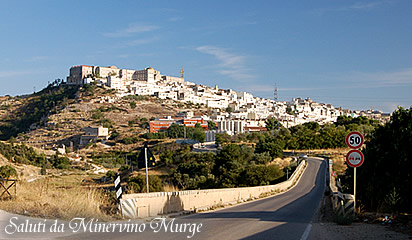
We drive to the top of the town and head back down to Trani on a different road…but one that is just as heavily cultivated as the one we drove up on.
One last stop before we head back to Trani…..Barletta, another port town on the Adriatic about 10 miles northwest of Trani. We take a short stroll through the “centro storico” and pop in to the duomo. But even at 5 pm, many of the shops are still not open so the town is very quiet. We do drive past one of the town’s tourist attractions, the Colossus of Barletta–a 20 foot high statue of a Roman general (no one is quite sure who it is) that is located right in the middle of the sidewalk of a busy street.
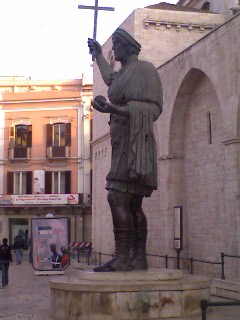
Dinner is at da Miana, the restaurant that was written up as serving “Jewish food”. At 8:15 pm, we are the first customers (in fact, only one other table is occupied by the time we leave at 10 pm). The host is very charming and, since we are the only customers, spends a lot of time with us. We have the da Miano special antipasto…three hot dishes–a red mullet in a sauce under a piece of pastry, fried shrimp in a crust of almonds (a bit too heavy on the almonds) and terrine with anchovies. Very inventive dishes and very good……No pasta tonight; instead a delicately prepared “fritto misto” for me and an excellent tagliata–steak cooked rare garnished with parmigiano-reggiano for Diana.
We have a pleasant stroll back to the hotel through the quiet streets of the old town. Tomorrow we explore Bari, the largest city in Puglia and a town with a “reputation”.
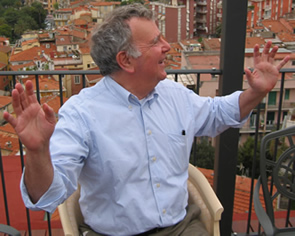

0 Comments:
Post a Comment
<< Home